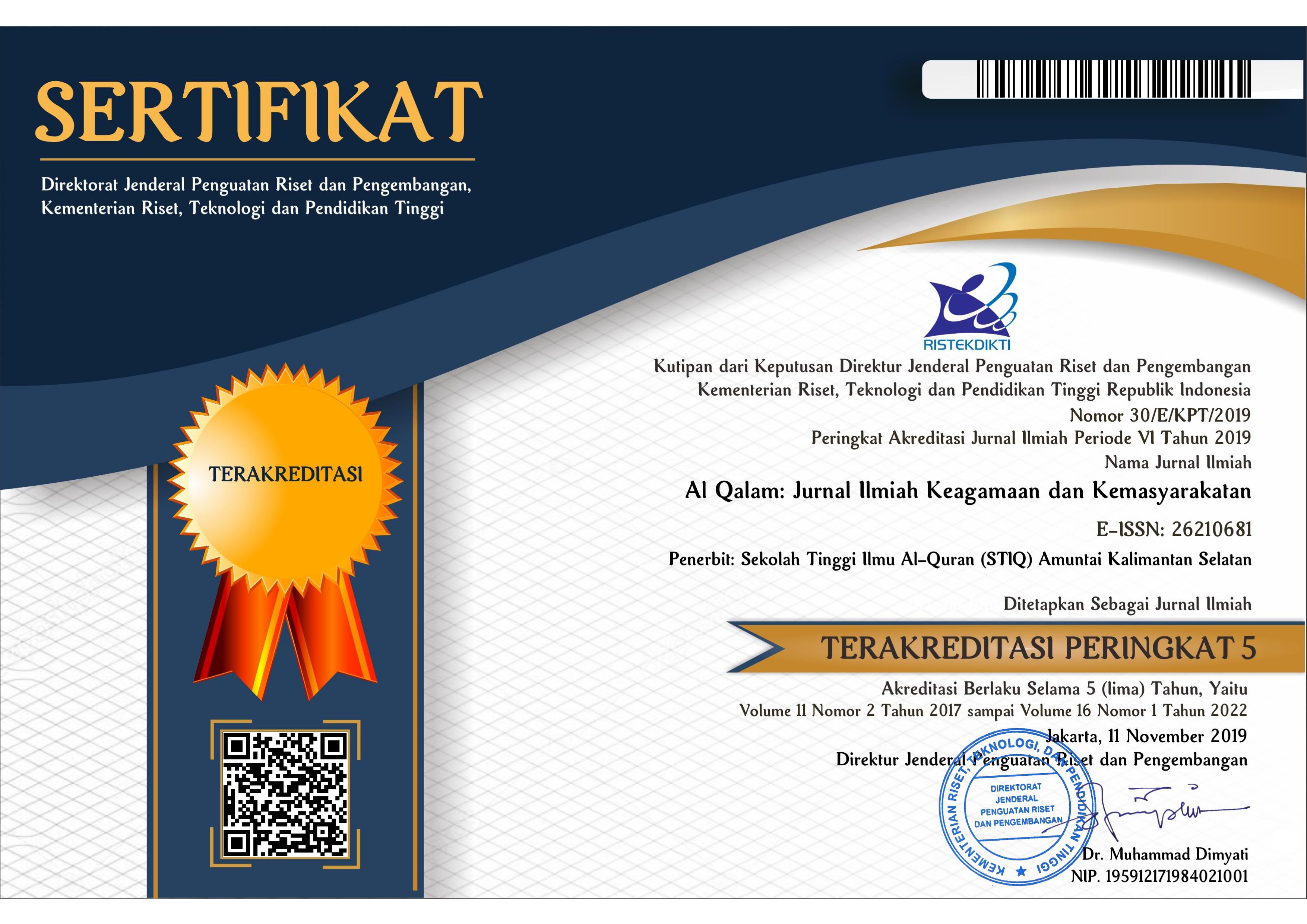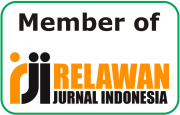The Influence of Strategic Leadership, Dynamic Capabilities and Organizational Ambidexterity on Sustainability Performance in Indonesian Regional-Owned Enterprises (BUMD)
Abstract
Regional Owned Enterprises (ROE) in Indonesia have a strategic role in supporting regional economic development and providing important public services to the community. As a business entity owned by the local government, ROE aims not only to gain financial profit but also to improve social welfare and manage local resources efficiently. This research aims to analyze the influence of strategic leadership, dynamic capabilities, and organizational ambidexterity on the sustainability performance of Regional Owned Enterprises (ROE) in Indonesia. Strategic leadership where a leader has a clear vision and can direct the organization in optimizing the dynamic capability and ambidexterity of the organization to achieve sustainaibility performance in BUMD Indonesia. Dynamic capabilities are the capability of an organization to adapt and respond to changes in the business environment through motivation and adjustment of resources. Ambidexterity organizational has an important role in organizing to explore new opportunities (exploration) and maximize the utilization of existing resources (exploitation). This research uses a quantitative approach by distributing questionnaires to 100 ROE in Indonesia. Using the Structural Equation Model (SEM) method, the research shows that strategic leadership has a positive and significant effect on dynamic capabilities and organizational ambidexterity. Dynamic capability, organizational ambidexterity and strategic leadership have a positive and significant effect on the sustainability performance. The research results that the dynamic capability and organizational ambidexterity can also be mediating factors influencing the relationship between strategic leadership and the sustainability performance.
Keywords
Full Text:
PDFReferences
Ambilichu, C.A., K. Omoteso, and L.S. Yekini. “Strategic Leadership and Firm Performance: The Mediating Role of Ambidexterity in Small and Medium-Sized Professional Services Firms.” European Management Review 20, no. 3 (2023): 493–511.
Asif, M. “Strategic Leadership and Ambidextrous Learning: Exploring the Role of Dynamic Capabilities and Intellectual Capital.” International Journal of Quality and Service Sciences 12, no. 1 (2020): 1–14.
Barney, Jay B. “Firm Resources and Sustained Competitive Advantage.” Journal of Management 17, no. 1 (1991): 19–120.
Budhisulistyawati, A., Y.T. Muryanto, and A. Sri. “Limited Liability Companies to Realize Principles.” Private Law 3, no. 2 (2015): 56–66.
Eisenhardt, K.M., and J.A. Martin. “Dynamic Capabilities: What Are They?” Strategic Management Journal 21, no. 10–11 (2000): 1105–21.
Elkington, J. Cannibals with Forks: The Three Cores of 21st Century Business. Capstone, 1997.
Epstein, M.J., and A.R. Buhovac. Making Sustainability Work: Best Practices in Managing and Measuring a Company’s Social, Environmental, and Economic Impacts. Berrett-Koehler Publishers, 2010.
Farzaneh, M., R. Wilden, L. Afshari, and G. Mehralian. “Dynamic Capabilities and Innovation Ambidextrousness: The Role of Intellectual Capital and Innovation Orientation.” Journal of Business Research 148 (2022): 47–59.
Forte, S.H.A.C., M.D.F.R. Silva, and M.N.Ferreira Neto. “Determinants of Organizational Ambidexterity in Academic Performance in Private Higher Education Institutions.” RAM. Revista de Administração Mackenzie 25 (2024): 240195.
Freeman, R.E., and J. McVea. “A Stakeholder Approach to Strategic Management.” In The Blackwell Handbook of Strategic Management, edited by M. Hitt, R.E. Freeman, and J. Harrison, 189–207. Oxford: Blackwell Publishing, 2001.
Gibson, C.B., and J. Birkinshaw. “Antecedents, Consequences, and the Mediating Role of Organizational Ambidexterity.” Academy of Management Journal 47, no. 2 (2004): 209–26.
Ireland, R.D., and M.A. Hitt. “Achieving and Sustaining Strategic Competitiveness in the 21st Century: The Role of Strategic Leadership.” Academy of Management Executive 13, no. 1 (1999): 43–57.
James, H. Strategic Management: The Theory and Practice of Corporate Strategy. Boston: Harvard Business Review Press, 1991.
Jansen, J.J.P., F.A.J. Den Bosch, and H.W. Volberda. “Exploratory Innovation, Exploitative Innovation, and Performance: Effects of Organizational Antecedents and Environmental Moderators.” Management Science 52, no. 11 (2006): 1661–74.
Kotter, J.P. Forces for Change: How Leadership Differs from Management. New York: Free Press, 1990.
Kump, B., A. Engelmann, A. Kessler, and C. Schweiger. “Towards a Dynamic Capabilities Scale: Measuring Organizational Sensing, Leveraging, and Transforming Capacities.” Industrial and Corporate Change 28, no. 5 (2019): 1149–72.
Leinwand, P., M. Ramesh, and M.L. Tushman. “The New Frontier of Strategic Leadership: Leading for Transformation and Growth.” Harvard Business Review 100, no. 5 (2022): 56–65.
Liu, Y., L. Wang, and X. Xu. “The Impact of Dynamic Capabilities on Organizational Performance: The Mediating Role of Strategic Innovation and Organizational Learning.” Strategic Management Journal 43, no. 5 (2022): 912–31.
Metcalf, L., and S. Benn. Sustainability Leadership: A Case Study Approach. London: Routledge, 2013.
O’Reilly III, C.A. “Ambidextrous Ability as a Dynamic Capabilities: Resolving the Innovator’s Dilemma.” Research in Organizational Behavior 28 (2008): 185–206.
———. “Ambidextrous Organizations: Past, Present, and Future.” Academy of Management Perspectives 27, no. 4 (2013): 324–38.
O’Reilly III, C.A., and M.L. Tushman. “The Ambidextrous Organization: Managing Evolutionary and Revolutionary Change.” California Management Review 38, no. 4 (1996): 8–30.
Popadiuk, S., A.R.S. Luz, and C. Kretschmer. “Dynamic and Ambidextrous Abilities: How Are These Concepts Related?” Revista de Administração Contemporânea 22, no. 5 (2018): 639–60.
Porter, M.E., and M.R. Kramer. “Strategy and Society: The Relationship Between Competitive Advantage and Corporate Social Responsibility.” Harvard Business Review 84, no. 12 (2006): 78–92.
Qammar, R., and R.Z.U. Abidin. “The Mediating and Moderating Role of Organizational Ambidextrous and Innovation Climate Between Leadership Style and Employee Performance.” Journal of Information Management 7, no. 1 (2020): 1–9.
Quansah, J., E. Osei-Tutu, R.D. Osei, and E. Darko. “Strategic Leadership and Organizational Performance: The Role of Dynamic Capabilities and Innovation.” Journal of Strategic and International Studies 12, no. 3 (2022): 45–67.
Sanaky, S.A.R. “Transparency in Management of Village-Owned Enterprises in the Framework of Optimizing Contributions to the Regional Economy.” Batulis Civil Law Review 2, no. 2 (2021): 126. https://doi.org/10.47268/ballrev.v2i2.688.
Sekaran, U., and R. Bougie. Research Methods for Business: A Skills Development Approach. 7th ed. West Sussex: Wiley & Sons, 2016.
Strand, R. “Strategic Leadership in Corporate Sustainability.” Journal of Business Ethics 123 (2014): 687–706.
Sun, S., X. Li, L. Wang, and J. Wang. “Dynamic Capabilities and Firm Performance: The Mediating Role of Organizational Innovation.” Journal of Business Research 98 (2019): 124–34.
Teece, D.J. “Complementarity: Open Innovation and the Dynamic Capabilities Framework.” Strategic Management Review 1, no. 2 (2020): 233–53.
———. “Explaining Dynamic Capabilities: The Nature and Foundations of (Sustainable) Firm Performance.” Strategic Management Journal 28, no. 13 (2007): 1319–50.
Teece, D.J., M.A. Peteraf, and S. Leih. “Dynamic Capabilities and Strategic Management.” In Oxford Handbook of Strategy, 1:330–55. Oxford: Oxford University Press, 2014.
Teece, D.J., G. Pisano, and A. Shuen. “Dynamic Capabilities and Strategic Management.” Strategic Management Journal 18, no. 7 (1997): 509–33.
Wibowo, A. “Development of Regionally-Owned Enterprises (BUMD) in Indonesia.” Advances in Economics, Business and Management Research 140, no. 23 (2020): 460–63. https://doi.org/10.2991/aebmr.k.200513.090.
Yukl, G. Leadership in Organizations. 8th ed. Pearson, 2013.
Zahra, S.A., and G. George. “Absorptive Capacity: A Review, Reconceptualization and Extension.” Academy of Management Review 27, no. 2 (2002): 185–203.
DOI: http://dx.doi.org/10.35931/aq.v19i3.4664
Refbacks
- There are currently no refbacks.
Copyright (c) 2025 Budiman Budiman, Yasmine Nasution

This work is licensed under a Creative Commons Attribution 4.0 International License.
Al Qalam: Jurnal Ilmiah Keagamaan dan Kemasyarakatan
index by:
Publish by:
Sekolah Tinggi Ilmu Al-Qur'an Amuntai
Contact us:
Address: Jl. Rakha Pakapuran, Amuntai Utara
Kabupaten : Hulu Sungai Utara
Kode Pos : 71471
Provinsi : Kalimantan Selatan
Telephone : 085251613000
Email: hafizhihusinsungkar@gmail.com

This work is licensed under a Creative Commons Attribution 4.0 International License


